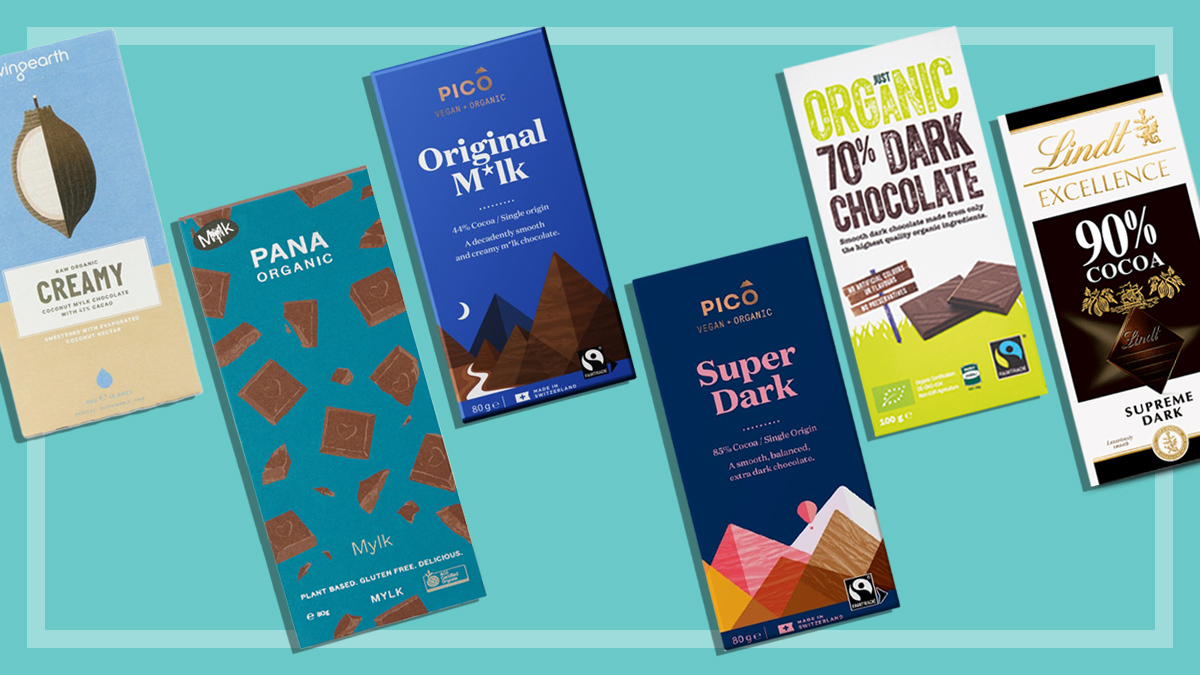Get our independent lab tests, expert reviews and honest advice.
Guide to buying ethical chocolate

In Australia and around the world, consumers have become more and more focused on living sustainably and shopping ethically in recent years. There have been positive changes in many global industries as a result of this shift, thankfully, and the chocolate industry – responsible for over $3 billion consumer dollars per year in Australia alone – is one of the most notable ones.
On this page:
- The issues and ethics around chocolate production
- Are things improving in the cocoa industry?
- Chocolate certification in Australia
- Where to from here?
- How to make a difference
While it’s considered a decadent treat by some, and a daily necessity by others, the push to make this sweet sensation into a more ethical indulgence is a necessary one. Here’s why.
The issues and ethics around chocolate production
The chocolate and confectionery industry is worth $6.7 billion in Australia, and has experienced an average of 0.4% growth per year over the last five years. This year it’s expected to grow 1.5% due to the easing of restrictions and conditions surrounding the pandemic.
The three largest manufacturers in the sector are Mondelez (e.g. Cadbury, Green & Black’s), Mars (e.g. Maltesers, Snickers, Celebrations) and Nestle (e.g. KitKat and Milo).
Environmental issues
Cacao needs specific humidity conditions to flourish, so is predominantly grown in tropical zones of South America, Africa and Asia. However, there are a small number of other growing areas, and even a handful of new cacao farms operating in Far North Queensland. The vast majority of cocoa processing occurs in Europe and North America.
Cacao trees are not disease-resistant, so intensive use of fertilisers and pesticides is required to increase their production. The use of these chemicals can have negative impacts on the environment, contributing to waterway pollution from nutrient run-off, ozone depletion and greenhouse gas emissions in the manufacturing process of the pesticides, and heavy metal contamination.
Recent additional increases in demand have exacerbated their use, and there has also been a significant increase in children’s exposure to these chemicals.
Cacao trees are not disease-resistant, so intensive use of fertilisers and pesticides is required to increase their production
Additionally, the use of fossil fuels in boilers and roasters in the processing stage of chocolate production contributes to greenhouse gas emissions. Combined with the carbon footprint of supply chain transport, from bean to end product, there are significant emissions produced in the process of making chocolate.
Clearing of forests to make way for farmland, loss of soil fertility, and biodiversity loss from both land clearing and pesticide use are also issues created by the industry.
According to WWF, it’s estimated that 70% of Côte d’Ivoire’s illegal deforestation is related to cacao farming. A Mighty Earth reported in 2021 that 47,000 hectares of forest was lost to cocoa production in the country in 2020.
These areas of deforestation for cacao farming also have a higher risk of child labour in cocoa production.
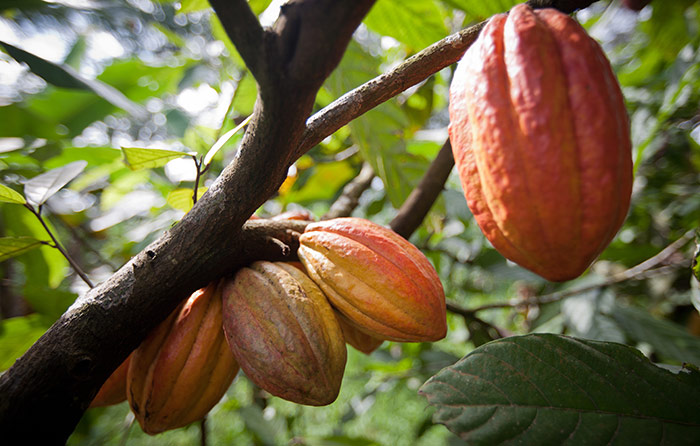
Child labour and trafficking
More than 40% of the world’s cocoa is grown in Côte d’lvoire in West Africa, and 70% comes from farms in the West African region.
It’s predominantly produced on small subsistence farms and smallholdings, where farmers often struggle to make ends meet. As a result, children are often made to work, or are trafficked and subjected to unfair and exploitative treatment.
Using 2018 figures it’s estimated that a cacao farmer in Côte d’lvoire earns just $US0.78 per day and $US1 per day in Ghana. This is below the World Bank’s extreme poverty figure of $US1.90 per person per day.
A report on child labour in West African cacao-growing areas conducted by Tulane University in the US and the International Labour Organisation found that in 2013-14, in Côte d’Ivoire and Ghana combined:
- 2.26 million children were working in cocoa production
- 2.12 million children were working in child labour in cocoa production
- 2.03 million children were working in hazardous tasks such as using hand-held machetes to cut down and crack open cocoa pods.
Are things improving in the cocoa industry?
In 2010 the chocolate industry and the governments of Côte d’Ivoire and Ghana made a pledge and signed a Declaration and Framework to cut the worst forms of child labour in the sector by 70% by 2020.
However, a 2020 report from the research group Norc (full name is NORC at the University of Chicago), found that instead of getting better, things had actually gotten worse.
Of children from cacao-farming families in Côte d’Ivoire and Ghana, 43% were carrying out hazardous activities such as using agro-chemicals and sharp tools
The report states that the prevalence of child labour increased from 31% of children age 5–17 in child labour in 2008–09, to 45% in the 2018–19 season. Of children from cacao-farming families in Côte d’Ivoire and Ghana, 43% were carrying out hazardous activities such as using agro-chemicals and sharp tools – which was up from 30% a decade earlier.
This has been largely because of a 62% increase in production. But it’s also because of the relationship between social and environmental pressures such as demand for more cheap labour (including children), deforestation, climate change and lower crop outputs.
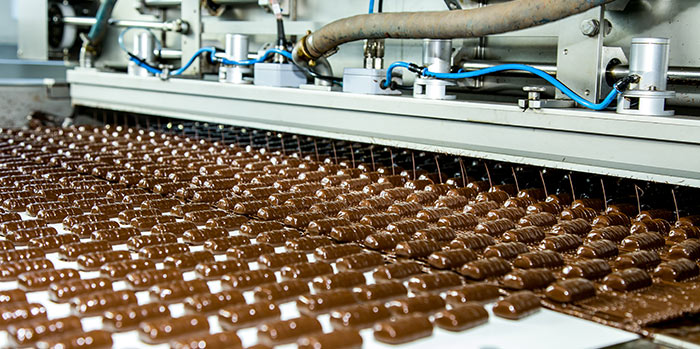
Positive changes
But despite these findings there has been some positive change in the industry, with governments putting in place initiatives and action plans to reduce child labour, improve school attendance and address child trafficking.
Additionally, many chocolate-makers met the 2020 goals, which include not only eliminating child labour but also reducing deforestation and lifting producers out of poverty.
We have seen progress but there is still a way to go
Fuzz Kitto, Be Slavery Free
For example, in March last year Ferrero announced they achieved their target of sourcing 100% certified sustainable cacao. This was in line with their pledge to source all of their cacao beans from sustainable sources by 2020.
“A lot of companies have upped their certification,” says Fuzz Kitto, co-director of the charity Be Slavery Free. “Nestle, Mondelez, Ferrero, Mars, Hershey and Lindt make 70 to 80% of the world’s chocolate; they all have programs in place and are moving forwards. We have seen progress but there is still a way to go.”
Chocolate certification in Australia
There are organisations that audit cocoa production and then “certify” the product if it meets certain ethical or sustainable criteria.
Rainforest Alliance, Fairtrade, and Cocoa Horizons are the three primary certification bodies available in Australia.
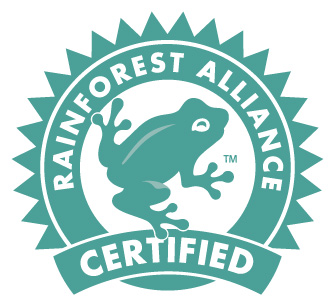
Rainforest Alliance products contain ingredients sourced from certified forests or farms, which are managed according to rigorous environmental, social and economic criteria.
According to the organisation, these criteria are designed to safeguard soils, forests and waterways; promote responsible land management and climate-smart practices; and to protect workers, their families and local communities.
To carry the Rainforest Alliance Mark, products must contain a minimum 30% of a certified ingredient, and must qualify the percentage on the label.
Where more than 90% of the total ingredients are sourced from certified farms the seal can be used without any additional percentage disclaimers.
In 2018 UTZ joined forces with Rainforest Alliance and in 2020 the UTZ certification system began being phased out in favour of the new Rainforest Alliance seal.
However, the UTZ Code of Conduct is still in use for now, alongside the Rainforest Alliance Sustainable Agriculture standard.
The UTZ code sets guidelines for sustainable farming methods.
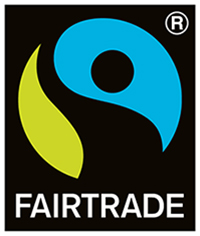
Fairtrade products aim to ensure small-scale farmers and workers have decent working conditions (including bans on forced and child labour), better commodity prices and sustainable production methods.
By ensuring companies pay sustainable prices for Fairtrade products, Fairtrade’s goal is to help eradicate the injustices of conventional trade, which traditionally discriminates against the most marginalised producers.
And Fairtrade producers and businesses in turn must meet a number of economic, environmental and social standards to help protect Fairtrade’s goals.
There are four main Fairtrade logos you’ll likely see on certified chocolate products:
- The Original Fairtrade Mark indicates that the product is fully traceable, i.e. all of the ingredients that are available as Fairtrade are Fairtrade-certified. You’re most likely to see this on single-ingredient products such as cocoa powder.
- The Fairtrade Mark with an arrow means that the ingredients that are available under Fairtrade conditions have to be Fairtrade (eg, cocoa, sugar, vanilla). The minimum total Fairtrade content is 20%. You can check the product labelling for more information about which ingredients are Fairtrade.
- The Fairtrade Cocoa White Mark indicates that that particular ingredient has been fully sourced as Fairtrade. Chocolate products may also carry the White Marks for sugar and vanilla.
- The Fairtrade Cocoa Program Mark indicates that all of the cocoa is Fairtrade-certified, while other ingredients, like vanilla or sugar, may not be.
You’ll find these logos on a number of chocolate products including those from Coles, Woolworths, Aldi and Green & Blacks.
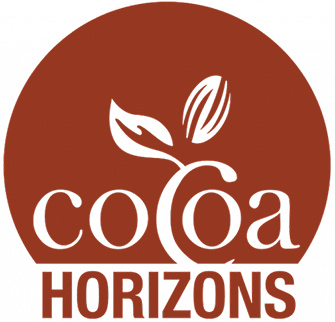
The Cocoa Horizons foundation was established in 2015 by cocoa-producing giant Barry Callebaut, which sells cocoa to smaller producers. This program focuses on cacao farmer prosperity, and helping to build self-sustaining farming communities.
Cocoa Horizon’s goal is to improve the livelihoods of cocoa farmers and their communities through the promotion of sustainable, entrepreneurial farming practices, as well as improved productivity and community development, all of which helps protect the environment and vulnerable children.
Cocoa Horizons works with a number of brand partners including Woolworths, Aldi, Darrell Lea and Hershey.
As well as the certification programs, many chocolate-makers have their own programs in place to help reduce slave labour and increase sustainability in cocoa production. “Nestle is probably the leader in looking at child labour and it’s been a big improvement,” says Kitto.
Launched in January 2022 after trials in Côte d’Ivoire, Nestle’s new scheme involves an innovative income accelerator program. According to Nestle, they aim “to improve the livelihoods of cacao-farming families and incentivise enrollment of children in school, while advancing regenerative agriculture practices and gender equality.”
Mondelez, who also owns Cadbury, has come under fire in recent years for abandoning Fairtrade Certification in favour of its own program Cocoa Life, which covers about 50% of their cocoa production. But, according to Kitto, this move isn’t as bad as it sounds.
“They work with the whole community, using the community development model,” he says. “It’s a very good model, but it will take time to bring in. We think in the long term it’s a wait and see on Cocoa Life, but it’s possible there will be longer term benefits over Fairtrade.”
Nestle is probably the leader in looking at child labour, and it’s been a big improvement
Fuzz Kitto, Be Slavery Free
Cocoa Life was launched in 2012 and is active in six cacao-growing regions; Ghana, Côte d’Ivoire, Indonesia, India, the Dominican Republic and Brazil. According to Mondelez the program is helping communities “gain knowledge and skills to improve their livelihoods, strengthen their communities and inspire the next generation of cocoa farmers.”
“Lindt also has a good program,” says Kitto, “which is important as they are big producers and are sold a lot through supermarkets, especially at Easter.”
The Lindt & Sprüngli Farming Program focuses on traceability from bean to finished chocolate product and also includes training, farmer investments and community development such as providing clean water access. Since 2020, 100% of their cacao beans are traceable and externally verified by an independent third party.
“This is a major step toward our target to source all cocoa products (beans, butter, powder) through sustainability programs by 2025,” says the Lindt website.
Where to from here?
The Norc report found that there are still 1.56 million children in the cocoa industry in Côte d’Ivoire and Ghana alone. Which indicates continuing difficulties in identifying child labour, even through certification programs.
“Certification is not the complete answer,” says Kitto. “Companies can often only check their direct supply chain down to the co-op level, and not necessarily at the farm level, which is where the labour is happening. So they do not always know where the cocoa comes from, which can make it hard to detect and stop child labour.”
Certification is not the complete answer
Fuzz Kitto, Be Slavery Free
According to Kitto there are some steps the industry could take next: “Increased use of Child Labour Monitoring and Remediation Systems (CLMRS) is one, and innovation and experimentation is key to the next step and is much needed to tackle the end of child labour.”
CLMRS are embedded in the supply chain of chocolate and cocoa companies, helping to identify and remediate cases of child labour. The implementation of these systems will mean there is more commitment and follow up, beyond certification alone.
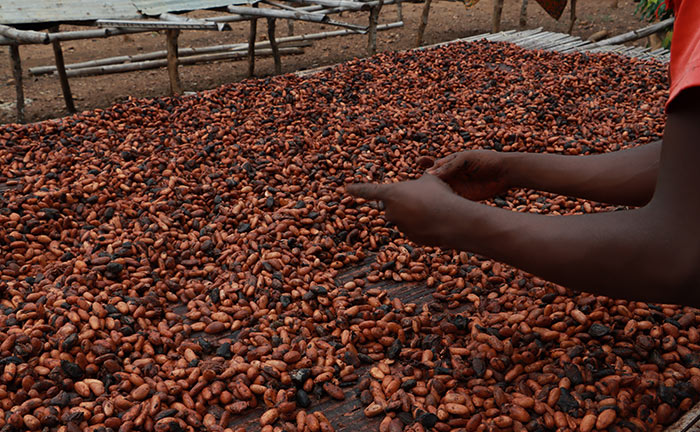
Living income for farmers and other workers is another serious issue, with low wages and poverty being rife in the industry.
The system for calculating a living wage has been refined in the last few years by the Global Living Income Coalition, and they take a scientific approach to regional living income assessments to work out what families actually need based on where they live.
“It’s a much more real assessment than what we have had previously,” says Kitto. “A lot of the companies, such as Nestle, are already instigating this and paying a premium to farmers to help.”
As for the certification systems currently in place, Kitto says they definitely still have value and are worth looking out for, whether they are company-based programs or independent.
Even if they’e not perfect, he says, “they are an indicator that the companies are making an effort to address the issues in their cocoa supply chain”.
How to make a difference
The global chocolate industry is shifting, and buying certified and ethically sourced chocolate products can help drive further positive change in the industry.
It’s worth noting though that not all brands – or all product ranges within a brand – may be certified and there are still improvements to be made.
There are also lots of smaller local and artisan brands entering the market, so it’s important to keep an eye out for the certification logos and do your background research on what programs companies have in place.
Put pressure on companies by contacting them directly and asking them to source their cocoa from sustainable and ethical sources
Shop Ethical! has an online shopping guide you can use as a starting point for information on what companies may be doing well, or areas where there are criticisms. The ratings Shop Ethical! give are company-wide, not just specific to their chocolate products.
You can also put pressure on companies by contacting them directly and asking them to source their cocoa from sustainable and ethical sources.






